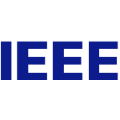Interpreting visual observations and natural language instructions for complex task execution remains a key challenge in robotics and AI. Despite recent advances, language-driven navigation is still difficult, particularly for UAVs in small-scale 3D environments. Existing Vision-Language Navigation (VLN) approaches are mostly designed for ground robots and struggle to generalize to aerial tasks that require full 3D spatial reasoning. The emergence of large Vision-Language Models (VLMs), such as GPT and Claude, enables zero-shot semantic reasoning from visual and textual inputs. However, these models lack spatial grounding and are not directly applicable to navigation. To address these limitations, SoraNav is introduced, an adaptive UAV navigation framework that integrates zero-shot VLM reasoning with geometry-aware decision-making. Geometric priors are incorporated into image annotations to constrain the VLM action space and improve decision quality. A hybrid switching strategy leverages navigation history to alternate between VLM reasoning and geometry-based exploration, mitigating dead-ends and redundant revisits. A PX4-based hardware-software platform, comprising both a digital twin and a physical micro-UAV, enables reproducible evaluation. Experimental results show that in 2.5D scenarios, our method improves Success Rate (SR) by 25.7% and Success weighted by Path Length (SPL) by 17%. In 3D scenarios, it improves SR by 29.5% and SPL by 18.5% relative to the baseline.
翻译:暂无翻译





